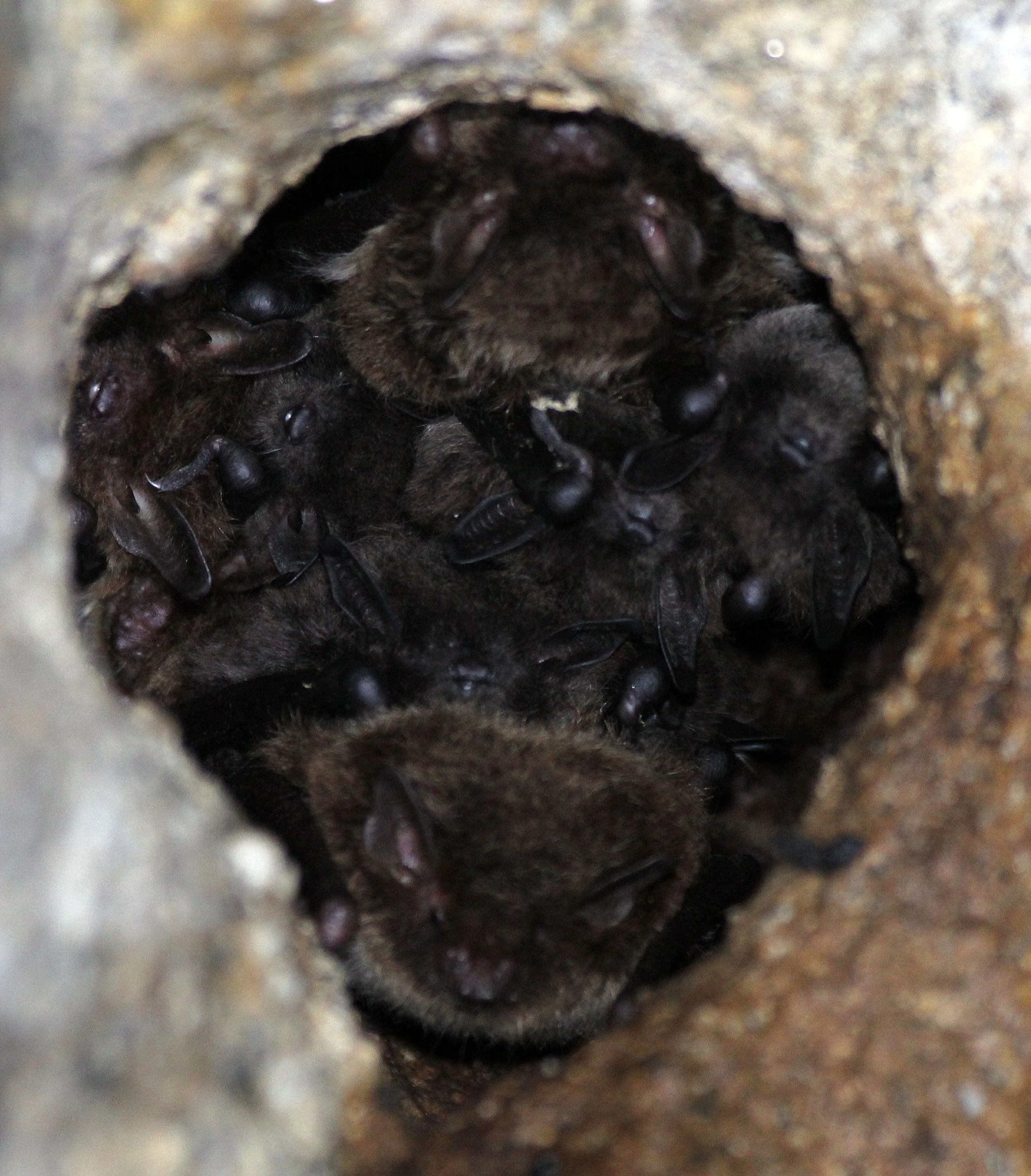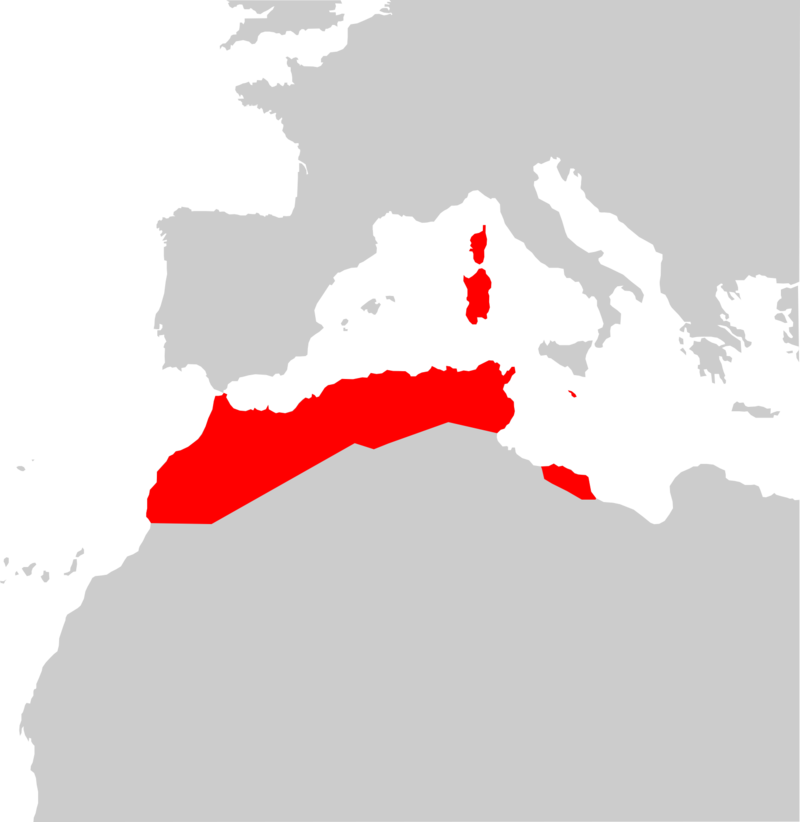
Genus Myotis, Vesper Bats
Daubenton's bat or Daubenton's myotis (Myotis daubentonii)
Greater Mouse-eared Bat (Myotis myotis)
Felten's or Maghreb’s myotis (Myotis punicus)
Fringed Myotis (Myotis thysanodes)
Daubenton's bat or Daubenton's myotis (Myotis daubentonii)
Greater Mouse-eared Bat (Myotis myotis)
Felten's or Maghreb’s myotis (Myotis punicus)
Fringed Myotis (Myotis thysanodes)
Daubenton's bat or Daubenton's myotis (Myotis daubentonii) is a Eurasian bat with rather short ears. It ranges from Ireland to Japan (Hokkaido) and is considered to be increasing its numbers in many areas.
This bat was first described in 1817 by Heinrich Kuhl, who named it in honour of French naturalist Louis-Jean-Marie Daubenton.
Daubenton's bat is a medium-sized to small species. The bat's fluffy fur is brownish-grey on the back and silvery-grey on the underside. Juveniles have darker fur than adults. The bats have reddish-pink faces and noses, but the area around the eyes is bare. When the bat is agitated, the ears are held at right angles. The wings and tail membrane are dark brown.
Daubenton's bat is typically 45 to 55 mm long, with an average wingspan of 240 to 275 mm, and weighs between 7 and 15 g.
Daubenton's bats can live for up to 22 years.
Daubenton's bat hibernating in Estonia. The moisture that has condensed on the bat's body helps it to prevent water loss.
Daubenton's bat is found throughout Ireland and Europe, and as far as Japan and Korea. The bat is mostly found in woodlands and always chooses roosts close to water sources such as rivers or canals.
Summer colonies are formed in caves, tunnels, cellars, mines, and underneath bridges. These colonies are also always near water. Daubenton's bat hibernates in the same type of locations from September to late March or April.
Myotis daubentonii - These individuals were phototraphed in Sierra de Andujar Spain.



















Greater Mouse-eared Bat (Myotis myotis) is a European species of bat in the family Vespertilionidae.
Myotis myotis is a large bat with a long, broad muzzle and big, long ears. The body's dorsal side is brown to reddish-brown, while the ventral side is dirty white or beige. The tragus forms half of the ear, with a small black tip in most individuals. Wing membranes are brownish in colour. The Greater mouse-eared bat is relatively large for a member of the genus Myotis, weighing up to 45 grams (1.6 oz) and measuring 8 to 9 cm from head to tail (a little larger than a house mouse, Mus musculus), making it one of the largest European bats. It has a 40 cm wingspan, with a forearm length of 6 cm, and a 4 to 5 cm long tail. The average lifespan of a greater mouse-eared bat is 3–4 years, although particular individuals have lived up to 14 years.
The greater mouse-eared bat can be found throughout Europe, with populations in most European countries except Denmark, Latvia, Estonia, Finland and the Scandinavian Peninsula. It is also found on many Mediterranean islands, such as Sicily, Malta, and the Gymnesian Islands.[4] In the Middle East, Myotis myotis has been found in Turkey, Israel, Syria, Jordan and Lebanon. It possibly lives in the United Kingdom.
In the Balearics, Myotis myotis can be found on the islands of Mallorca and Menorca. It is the most abundant species of bat on Mallorca, with several caves containing large colonies of 200, 400 and 500 individuals. It is also very common in the Iberian Peninsula and France.
During the 20th century, this species was very rare in Great Britain, occurring only in southern England. However, the bats at the only known hibernation roost declined until only a few males were left, and when these disappeared the species was believed locally extinct. However, occasional individuals have been discovered in recent years, suggesting either that a colony survives or that further animals have colonized Great Britain from mainland Europe.
In 2012, a LIFE-Nature project was initiated, aiming to protect the several thousands of greater mouse-eared bat in the Gola della Rossa and Frasassi Nature Park in the Marches.
These individuals are from Sierra de Andujar Spain.









The Felten's or Maghreb’s myotis (Myotis punicus) is a species of vesper bat.
It is found in Algeria, Libya, Malta, Morocco, Tunisia, France (Corsica) and Italy (Sardinia). Its natural habitats are temperate forests, temperate shrubland, subtropical or tropical dry shrubland, Mediterranean-type shrubby vegetation, temperate grassland, caves, subterranean habitats (other than caves), arable land, rural gardens, and irrigated land. The habitat range extends to the border of the Sahara desert. In Tunisia, the species has been observed as far south as Ghomrassen or the Bou-Hedma National Park.
The species - at least as far as specimens roosting in Northern Tunisia are concerned - seems able to give birth much earlier in the spring than the closely related species Myotis myotis or M. blythii in Europe or Western Asia: Individuals born that year and able to fly were observed in el Haouariya caves on May 24th 2011 (i.e. these juveniles were born between 3 and 4 weeks prior).
















The Fringed Myotis (Myotis thysanodes) is a species of vesper bat that is found in British Columbia, Mexico, and the western United States.
Myotis thysanodes, or the fringed myotis, has the shortest ears of the long-eared myotis group. The fringed myotis gets its name from the distinct fringe of short, wire-like hairs found on the membrane between its hind legs. With a lifespan that can reach upwards of 18 years, this species has an average total body length of roughly 85mm and an average weight of 8.8 grams. Ear length is about 16.5mm and they project roughly 5mm beyond its snout. Sexual dimorphism is seen in this species with males being much smaller than their female counterparts. They possess a pelage that is full and tends to be light yellow-brown or olive on the back with an off-white color on its underside. Northern populations tend to have darker coloration.
The fringed myotis resides mainly in the western United States and can be found as far north as British Columbia and as far south as Mexico. It's primarily found in desert shrublands, sagebrush-grassland, and woodland habitats consisting of Douglas-fir, Oak, and Pine trees. The fringed myotis typically inhabits elevations of 1,200-2,100 m but has been observed in altitudes as high as 2,850 m in New Mexico and as low as 150 m in California. This individual was found dead in Death Valley California.





